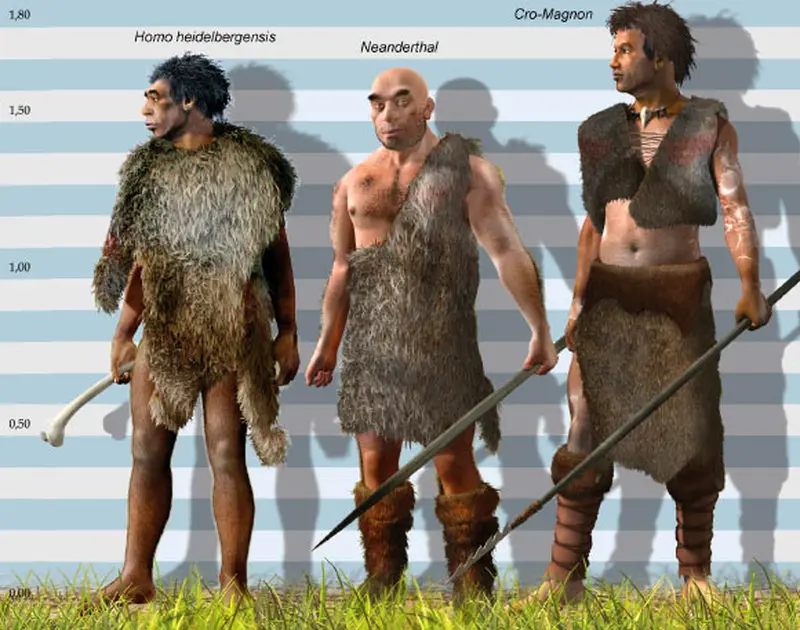Over the past two decades in evolutionary genetics Homo sapiens The prevailing concept is that our species first emerged in Africa about 200,000 to 300,000 years ago, and it descended from a single ancestral lineage.
However, according to a new study from the University of Cambridge, modern humans are the “offspring” of two populations: Homo heidelbergensis and Homo erectus. They diverged 1.5 million years ago and merged as a result of mixing 300,000 years ago at a ratio of 80:20 percent.
“The question of where we come from has intrigued science for centuries. For a long time, it was believed that we descended from a single continuous ancestral line, but the exact details of our origin were unknown,” said Dr. Trevor Kazins, co-author of the study.
“A new study shows clear signs that our evolutionary origins are more complex and involve different groups that evolved separately for over a million years, and then came back together to form the modern human species,” added Professor Richard Durbin from the university.
How did the scientists come to that conclusion?
Previous studies have shown that Neanderthals And Denisovans interbred with representatives of Homo sapiens about 50,000 years ago. However, the authors of a new study suggested that long before these interactions – around 300,000 years ago – there was a much more significant genetic mixing.
Unlike DNA Neanderthal DNA, which makes up about two percent of the genome of non-African modern humans, resulted in a tenfold higher percentage from this ancient mixing event. The result of this mix is found in all modern humans.

The team’s method was based not on extracting genetic material from ancient bones, but on analyzing the DNA of modern humans. As a result, the scientists concluded that there were ancestral populations that otherwise might not have left any physical traces.
The authors developed a computational algorithm called cobraa. It modeled how ancient human populations split and later rejoined, writes Sci.news .
Researchers tested the algorithm using simulated data and applied it to real genetic data obtained from the “1000 Genomes” project. This is a global initiative in which scientists sequenced the DNA of populations from Africa, Asia, Europe, and America.
Thus, the team managed to identify two key ancestral populations. However, it also discovered some striking changes that occurred after these two populations initially diverged.
Professor Elwyn Scully from Cambridge University stated: “Immediately after the two ancestral populations split, we see a serious bottleneck in one of them; this suggests that it shrank to very small sizes and then slowly expanded over a million years. This population later contributed about 80 percent of the genetic material in modern humans and was likely the ancestral population from which Neanderthals and Denisovans descended.”
Scientists have also discovered that genes Inherited from the second population, they often located far from the regions of the genome associated with gene functions. Thus, it can be assumed that they might have been less compatible with the genetic background of the majority. This suggests a process known as purifying selection, which over time removes harmful mutations.
As the team noted, fossil materials indicate that “species such as Homo erectus and Homo heidelbergensis lived during that period as well.” Africa “as well as in other regions.” This potentially makes them ancestral populations. However, further research is needed to confirm the results of the study.
“The fact that we can now reconstruct events that occurred hundreds of thousands or millions of years ago simply by studying DNA is astonishing. It shows that our history is much richer and more complex than we had imagined,” said Professor Scully.
The results of the study were published in the journal Nature Genetics.
